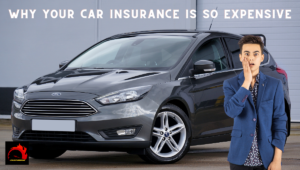The boosted board is a relatively easy board. It is a skateboard with electric power that is incredibly quick and easy to use for transportation. The skateboard’s back wheels are spun by a small motor and battery attached to the board.
The engine typically employs two carbon belts, a system that everyone who has ever looked at e-bikes would be familiar with.
A 40V lithium-ion phosphate battery powers the board. A handheld remote with simple controls is available to adjust the speed.
Advance the throttle to move quicker, then draw it back to slow down. The battery charges as you slow the board down because the motor regenerates power.
Problems with boosted boards
Due to their high speed and torque, their brakes and lithium-ion battery-boosted boards have brought several risks. Brake issues have also been reported with boosted boards.
The braking system on the board may malfunction when riders move downhill, especially when the commission is fully charged, leading to loss of control and serious injury.
The on-board batteries have reportedly failed, posing a risk of fire and smoke. Due to battery burning issues, a manufacturer announced a recall in January 2017 for thousands of boards.
The flames from a lithium battery fire might seriously burn riders and harm them.
Why Do You Need to Protect Your Safety?
Surfing the Boosted boards carries considerable risks, as we’ve already explained. For starters, falling puts a person at risk for catastrophic injuries.
Falling is likely to occur for a variety of reasons. It can happen when you ride in the dark late at night or travel quickly over damp ground. Spine, neck, & head injuries are the most frequent from using electric scooters.
However, additional burns and disorders like road rash might appear if someone falls severely on a paved hard concrete surface. Broken bones & dislocations are other potential outcomes.
If someone stays safe, 99.9% of these injuries may be avoided. Boosted boards are meant to be risk-free and secure. Most of the observed safety issues result from carelessness on the part of the rider.
How did it go out of business?
The staff was promptly expanded, benefits were improved, and new products were created under Jeff Rusakov, the company’s new CEO. It includes designing the new electrical scooter, the Rev, and a new range of smaller, more affordable boards and upgraded vintage longboards.
2018 was supposed to be a year for sustainability & raising finance, so things for Boosted looked excellent. They succeeded, generating $60 million for the Rev and business operations.
Reason for failure:
Tariff:
Boosted was directly harmed by US-China relations. All of the Boosted items were made in China; thus, they would be affected by the trade conflict.
After that, Boost requested a product exclusion, which was granted. However, Boost wouldn’t immediately get this cash because the government needed to disburse.
As the boosted Rev was further delayed, word spread that Boosted must pay vendors promptly, owing up to $100,000.
Competitive markets:
When customers flocked to less expensive alternatives that offered comparable capabilities at a lower price point, competition ate into market share.
As Boosted continued to slash expenses by mandating that employees bring their lunches and eliminating other employee benefits, things needed to look better.
Additionally, because of Booster’s rapid growth over the previous year, most of its 150 workers were engineers who demanded high compensation, which meant that payroll depleted a sizable portion of income.
Finally, boosted ended, and CEO Rusakov & Co-Founder John Ulmen declared that Boosted would continue to operate under Lime Scooters.
The downfall of Boosted was inevitable.
A specialized market, competition, and tariffs all contributed to the company’scompany’s demise. Competition from China encouraged the already small niche market to switch from the expensive Boosted Board to less expensive boards, thus decreasing Booster’s income.
For Boosted, maintaining, producing, and expanding just became too much. They tried to diversify their markets and make expensive boards for the general public.
Conclusion
All during its formative years, Boosted surpassed expectations. It was a well-received Kickstarter initiative that developed into a legitimate business and helped invent an entirely new class of vehicles.
But by the time it was all through, boosted had turned into a more typical thing: just another Silicon Valley business that had trouble achieving the lofty objectives established by the individuals who ended up in charge.




